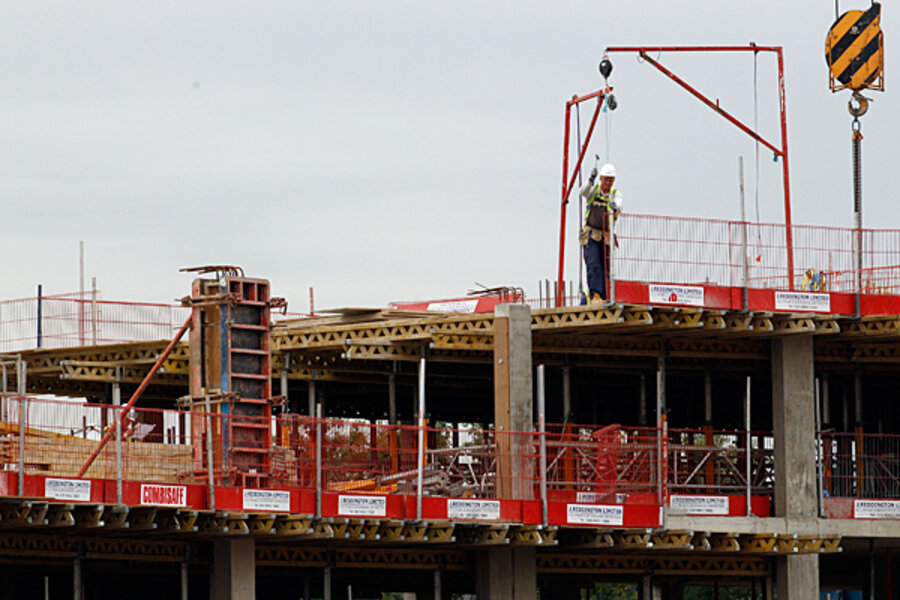European men losing jobs faster than women
Loading...
| Dublin
Since the "great recession" hit, the labor market in Europe has been shedding jobs hand over fist, and it appears men may have it worse than women, reports a new European Union study.
A report from the EU's employment research unit Eurofound says women fared better than men in the labor market during the recession. Of the five million jobs shed between 2008 and 2010, four million were held by males, one million by females.
The reason behind higher unemployment among men may have little to do with gender issues, and almost everything to do with the gender composition of the industries hardest hit by the recession. Construction and manufacturing, for example, have taken some of the biggest blows and these tend to be male dominated professions.
"It has nothing to do with women; there's nothing feminist or unfeminist about it. Sex is of declining significance in the labor market. I don't think women are more vulnerable than men, or vice versa. It's entirely a question of the industrial composition of the [individual national] economy," says Catherine Hakim, a sociologist at the Center for Policy Studies and former research fellow at the London School of Economics.
Gender differences among blue and white collar jobs
Professional-grade positions in the female-dominated health and education sectors continued to expand while mid-paying and traditionally male industries, such as construction and manufacturing, contracted.
The manufacturing industry lost jobs in both traditional and high-tech segments of the industry, while the construction sector has virtually collapsed in many countries, with employment in the construction industry down by as much as half in Ireland and the Baltic countries.
While almost all the employment growth in the top quintile in the 27 EU countries has gone to women, net female job losses "have been exclusively in middle- and low-paid jobs," the report says.
"Both men and women lost jobs in net terms, but in terms of 'top jobs,' better paid and professional positions, there was job growth overall and women got the lion's share of them," says the EU report's co-author John Hurley
There is also evidence of growing polarization between blue and white collar jobs for both sexes. While the service sector has created jobs at the top and bottom of the employment structure, there have been comparatively few new mid-rank jobs, meaning the service industry is not picking-up the slack from losses in manufacturing.
"We're seeing an hourglass shaped labor market, with most of the losses concentrated in the middle," says Andrew Sissions, a researcher at the Work Foundation, a British think-tank that tracks employment and industrial issues.
Mr. Sissions also says that even in periods of growth, manufacturing has a tendency to shed jobs as it becomes more productive and less labor intensive.
Construction flatlining
Construction, meanwhile, has flatlined across much of Europe.
"Too many of the [EU] construction booms were driven by housing bubbles rather than investment in infrastructure," Sissions says.
Martin Whelan, director of policy at Ireland's Construction Industry Federation, says the absence of strategic enterprise policy for the construction industry has resulted in the drop-off in activity being more severe than it need be.
"One of the great legacies of the sector was to deliver regeneration of our cities and towns but now there is a significant overcorrection in construction," he says.
Whelan also says governments favoring day-to-day spending over capital investment is a mistake that results in slower growth.
"There appears to be an orthodoxy in Europe favoring [spending] cuts but national accounts have two dimensions, and one of them is growth. The multiplier effect from productive investment is clear."
US men also losing jobs in higher numbers
The research mirrors findings from the US indicating men have been more vulnerable to downticks in the economy due to declines in male-dominated industries more susceptible to the cold winds of recession. National Bureau of Economic Research figures show that 70 percent of US jobs lost between December 2007 and June 2009 had been held by men. The Bureau of Labor Statistics figures published on Oct. 7 show within the labor force, 8.8 percent of adult men and 8.1 percent of adult women were unemployed in September.
However, men are also returning to work at a faster rate than women as these industries recover – though the percentages for men and women alike are negligible. Between August and September 2011, male unemployment shrank by 0.1 percent whereas female unemployment grew by 0.1 percent.
Back in the EU, although a greater number of men than women have lost jobs, the numbers are not identical in every country. As the Eurofound report indicates, wrenching increases in unemployment in countries such as Estonia, Ireland, and Spain were avoided in other nations such as Germany and Belgium, particularly through the introduction of short-time working schemes.
Some are warning, however, that spending cuts will disproportionately hurt female workers as government jobs are shed. Around two-thirds of public employees in Britain are female, meaning women are at greater risk of job losses as government spending cuts kick-in.





